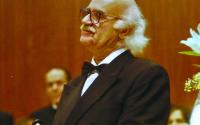23 January 2008Vikas Bajaj and Michael M. Grynbaum
Dan MacMillan was fearing the worst on Tuesday morning. Like many Wall Street traders he expected share prices to plummet after two days of severe declines in overseas markets.
“I was wondering this morning if this was going to be one of those historic days you read about 20 years from now,” said Mr. MacMillan, a trader at AG Asset Management in New York.
As traders gathered outside the New York Stock Exchange minutes before the opening bell, a security guard captured the mood with some gallows humor. “The market is going to crash — that’s why everyone is here, right?” he joked.
But even before the Big Board opened good news came from the Federal Reserve: A surprise cut in interest rates that might check a precipitous plunge in share prices.
Stocks plummeted anyway, with the Dow Jones industrial average tumbling a nerve-rattling 464 points in minutes. And then, before anyone could add up all the losses, the market began to rally — and rally and rally. Battered financial shares bolted higher. By 11 a.m., the Dow was on track to wipe out its losses but slumped again, falling 180 points. The index staged another comeback in the late afternoon, and by 3:37 p.m. was within 26 points of its close on Friday.
By the end of the day, however, the Dow had fallen to 11,971.19, down 128.11 points, or 1.06 percent, its lowest close in 15 months.
The dizzying somersault left Wall Street traders and everyday investors a bit giddy that it was not worse, but still biting their nails.
Many wondered what lies ahead now that the bull market that began in 2002 is stumbling and a recession looms. Others were just relieved to make it through a volatile day without steep losses.
Traders returned from a long holiday weekend on Tuesday with their nerves already frayed by a week of steep losses at home and overseas. Before the Big Board opened, stock index futures suggested the American market was headed for its steepest decline since the terrorist attacks of September 2001.
But help was already on the way. In Europe traders were buzzing that the Federal Reserve and the European Central Bank might take coordinated action to shore up world markets.
That did not happen. But, about an hour before trading opened in New York, the Fed announced it was cutting its benchmark interest rate by three-quarters of a percentage point, to 3.5 percent. It was the first time the Fed cut rates between regularly scheduled policy meetings since the 2001 attacks. The European Central bank took no action.
When the opening bell rang on the Big Board at 9:30, stocks initially fell about 4 percent but quickly bounced back, Several times during the day the Dow almost wiped out its losses completely.
The rally may have been driven by investors who had previously sold short, betting the market would decline, and were now closing out those positions, said Douglas M. Peta, chief market strategist at J.& W. Seligman.
James W. Paulsen, chief investment officer at Wells Capital Management, said the holiday on Monday gave American investors a chance to ease their fears about the foreign sell-off.
“I’d already been in denial, I went right through that into grief,” he said. “By the time I showed up today it was like, What do you mean it’s only down 300? Hell, that’s nothing!”
At AG Asset Management, which overseas $2 billion, it appeared to be business as usual as the trading day wound down. Traders on the firm’s Park Avenue trading floor said they had managed a few lucrative trades, and Mr. MacMillan looked relieved.
Some individual investors, meantime, seized the chance to buy stocks on the cheap. Among them was Al Baier, the owner of tractor supply business in Wisconsin.
Mr. Baier paid little attention to the stock market for much of the day but called his financial adviser, Bill R. Hilgedick, at the brokerage firm Edward Jones, at around 3 p.m. to find out what was going on in the market. When he heard the Dow had fallen by nearly 500 points earlier in the day, Mr. Baier jumped at the chance to buy.
“When it’s down, you take advantage of it,” said Mr. Baier, 61 and of Menomonie, Wis. He said he has been adding to his mutual fund holdings since the year started as stocks have fallen. He said he is eager to build up his portfolio because he only started investing in the early 1990s and he would like to buy a home in Montana.
Specialists said the cut by the Fed and its future moves may not be enough to avert a recession. Still, they noted that it was an important first step to ease the flow of credit from banks to consumers and businesses. It will also help consumers who face resetting adjustable-rate mortgages, which are tied to short-term lending rates that are more directly influenced by the Fed’s benchmark rate than the rates that apply to 30-year fixed-rate mortgages.
The Fed “basically told the market that the markets were in charge and they wouldn’t be disappointed,” said William H. Gross, the chief investment officer of the bond firm Pimco.
Typically the Fed is loath to be viewed as kowtowing to the stock market, but falling house prices and rising mortgage defaults have heightened fears that the American economy is either in a recession or headed toward one, he said.
“Let’s face it, the U.S. consumer is dependent upon housing prices and stock prices and with both of them sinking rapidly the outlook for the economy is not good,” Mr. Gross said.
Investors in the futures market are now betting that the Fed will cut rates by another half a point when policy makers meet next week. Many specialists are also now speculating that the European Central Bank, where officials have been wary of cutting rates because of inflation, will also be forced to cut.
“Things would be worse if the Fed hadn’t cut and it would be worse if the E.C.B. doesn’t cut,” said Bernard Connolly, chief global strategist at Banque AIG in London. “Is it enough? No. It still doesn’t give the market what it wants in terms of rate cuts and there are further problems in the stock market and the real economy.”
One mounting concern that has played a major role in the market and the thinking of policy makers is the viability of companies that guarantee trillions of dollars of municipal, mortgage and corporate bonds. These firms, led by MBIA and Ambac, have been under a cloud for much of the last year because they have insured tens of billions of dollars of securities backed by risky home mortgages, which have been defaulting at a rapid rate.
The Standard & Poor’s 500-stock index fell 1.11 percent, or 14.69 points, to 1,310.50. The Nasdaq composite index declined 2.04 percent, or 47.75 points, to 2,292.27. Treasuries again rallied and the yield, which moves in the opposite direction of its price, for the 10-year note fell to 3.43 percent, from 3.63 percent on Friday evening.






